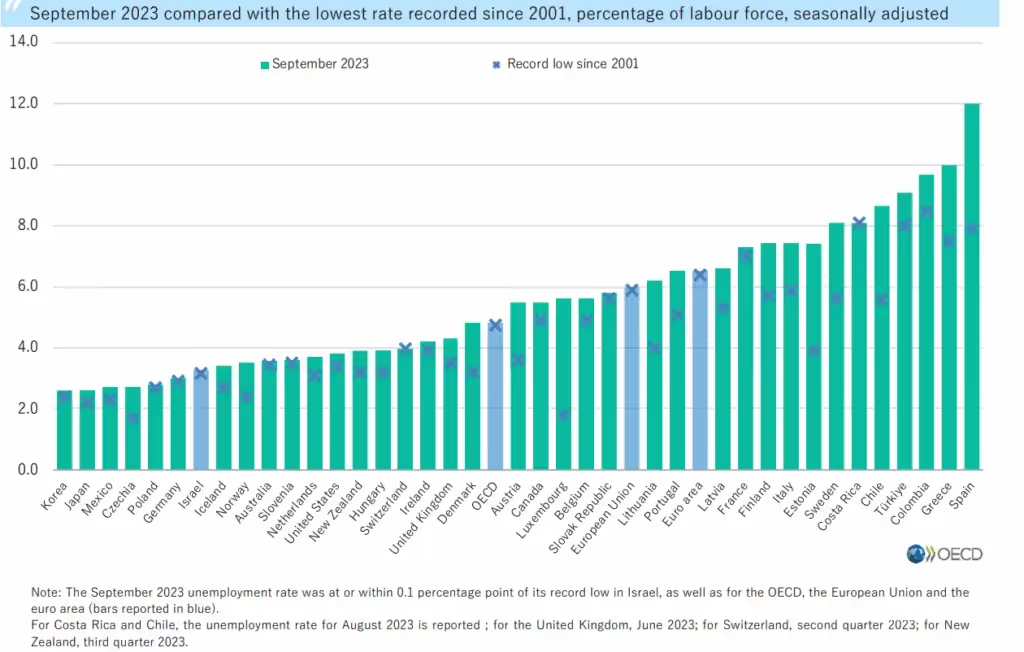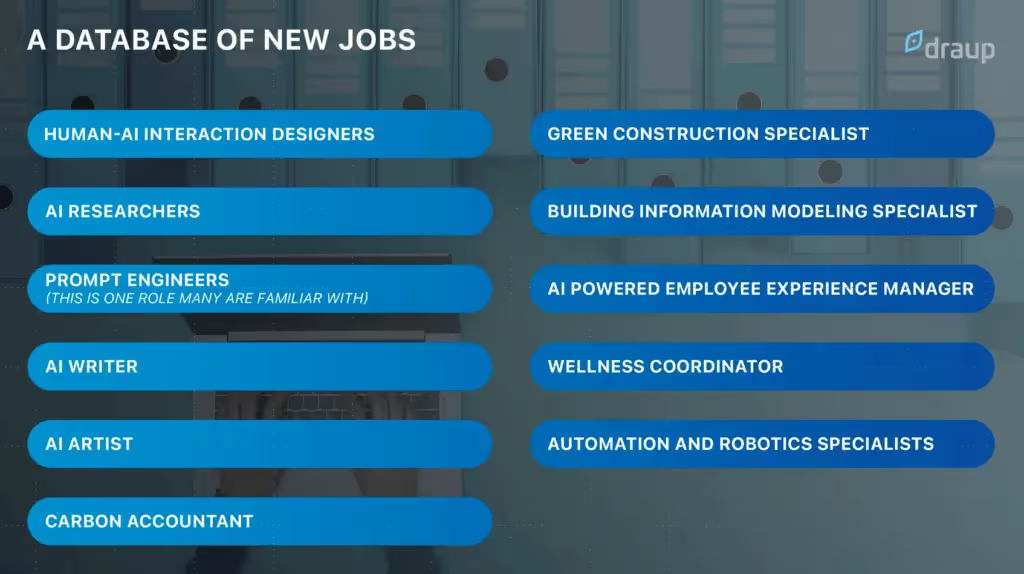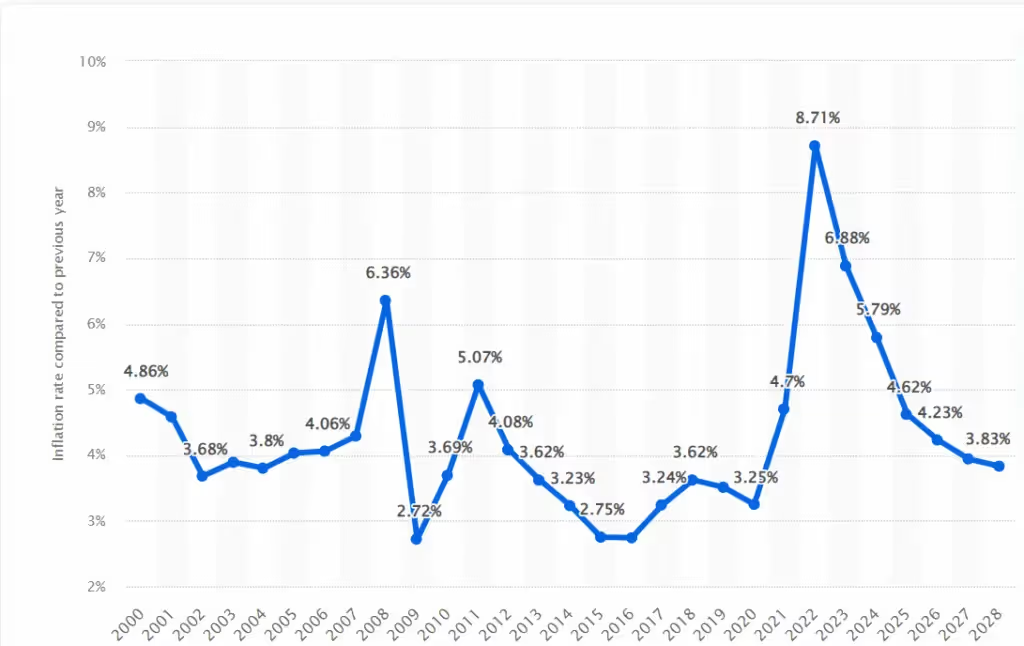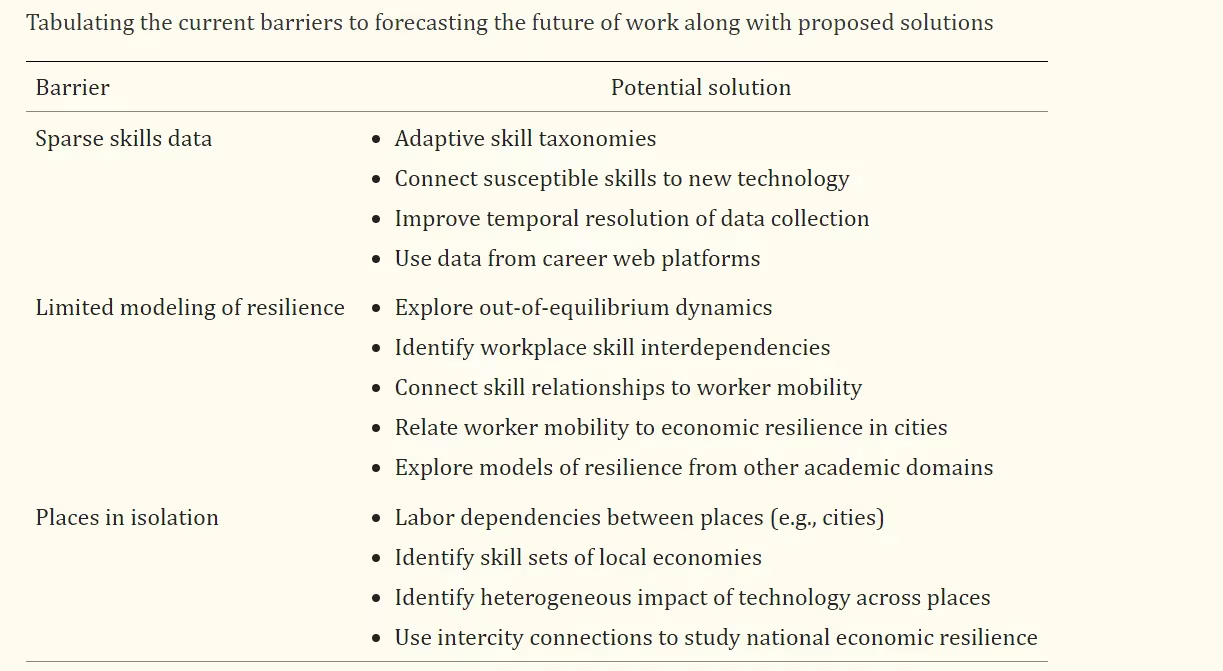2024 Labor Market Outlook: Navigating HR Strategies in an AI-Driven Era
As we move closer to 2024, having experienced a year marked by significant advancements in AI, I’ve focused this week on identifying key labor market trends to expect in the coming year. A recent experience during a flight trip to Europe highlighted these issues for me. My flight was postponed due to a staff shortage at the airline, leading to departure delays. This incident profoundly impacted me, underscoring the critical role of labor market dynamics and the necessity for businesses to have a robust human resource strategy.
Here are some trends we should expect in 2024 from a labor market perspective.
Strong Labor Markets in Rich Countries:
Despite global economic uncertainty, labor markets in rich countries are expected to remain strong in 2024. The unemployment rate is at historic lows, and the working-age employment rate is at an all-time high in many OECD countries. (Organization for Economic Co-operation and Development). The OECD unemployment rate was stable at 4.8% in September 2023, having remained below 5.0% since July 2022. The unemployment rate rose in 16 OECD countries in September 2023, was unchanged in 11, and declined in 6 (Among the OECD countries tracked)

Higher Market Share may necessitate more Workers:
The adoption of AI and other automation technologies could lead to an increase in market share for companies, potentially resulting in more job opportunities in certain sectors. A notable study examining Japanese manufacturing from 1978 to 2017 discovered that adding one robot for every 1,000 workers led to a 2.2% rise in employment within those firms. (Note: The study is available as a PDF on the website of the Research Institute of Economy, Trade & Industry (RIETI) under the title “Robots and Employment: Evidence from Japan, 1978-2017”)
HR will be at the forefront of creating new Jobs for the labor force:
Human Resources (HR) will play a pivotal role in creating new jobs, positioning itself at the forefront of this critical endeavor. As industries evolve and new sectors emerge, HR professionals will be instrumental in identifying and fostering the necessary skills and talents required for these novel roles. They will not only be involved in traditional recruitment but also in anticipating future workforce needs. This forward-thinking approach will include analyzing industry trends, understanding technological advancements, and aligning workforce planning with strategic business goals.

Higher Wages:
In 2024, the competitive labor market is anticipated to highly value the attraction and retention of exceptional talent across various skill domains. It will be crucial for employers to extend beyond competitive salaries as employee expectations have evolved. Inflation will be a significant factor to consider. Aspects like opportunities for learning and development, fostering a sense of belonging, and maintaining a healthy work-life balance are becoming more pivotal for employees.
Worldwide Inflation Trends

Mastering AI, Labor Economics, and Industry Trends: The Future of HR in Enhancing Human-Machine Synergy
The Human Resources (HR) sector is expected to increasingly develop proficiency in understanding AI fundamentals, labor economics, and industry trends, as these areas will significantly influence the synergy between humans and machines. This trend means that HR professionals must be well-versed in the basics of artificial intelligence, including how AI can be applied in the workplace and its potential impacts on jobs and productivity. A deeper knowledge of labor economics will also be essential for understanding workforce dynamics, employment patterns, and how economic factors affect employment. With respect to this trend, there is a fascinating paper “Frank MR, Autor D, Bessen JE, Brynjolfsson E, Cebrian M, Deming DJ, Feldman M, Groh M, Lobo J, Moro E, Wang D, Youn H, Rahwan I. Toward understanding the impact of artificial intelligence on labor.”
The authors discuss the barriers and potential solutions to the future of work. One table is very useful for us in this study.

Migration will be an important discussion:
The Nobel Week Dialogue 2023 focused on the future of migration, bringing together individuals from various fields to explore this significant topic. The event aimed to delve into the historical and contemporary aspects of human migration, discuss the current global responses to human resettlement and investigate the necessary measures to assist and prepare for the future. The dialogue emphasized the increasing relevance of migration due to factors such as climate change, economic inequality, and conflict. It provided a platform for Nobel Prize laureates, leading experts, and the general public to engage in discussions and debates and shape the future of migration. The event also highlighted the profound impact of migration on economies, cultures, and societies, positioning it as a defining megatrend of the 21st century. The dialogue was organized to bridge science and society, stimulate critical thinking, and inspire collective action on this pressing global issue.
Numerous factors were explored, but a crucial insight is that migration encompasses not only international relocation but also internal movement within a country, driven by climate change and economic challenges, which is becoming a significant element to consider.
Overall, we are pretty excited about HR’s role under emerging circumstances. If we plan the initiatives correctly, we can accelerate transformation and adaptation and make the enterprises genuinely care for a great workplace.










.svg)




















.svg)





.svg)
